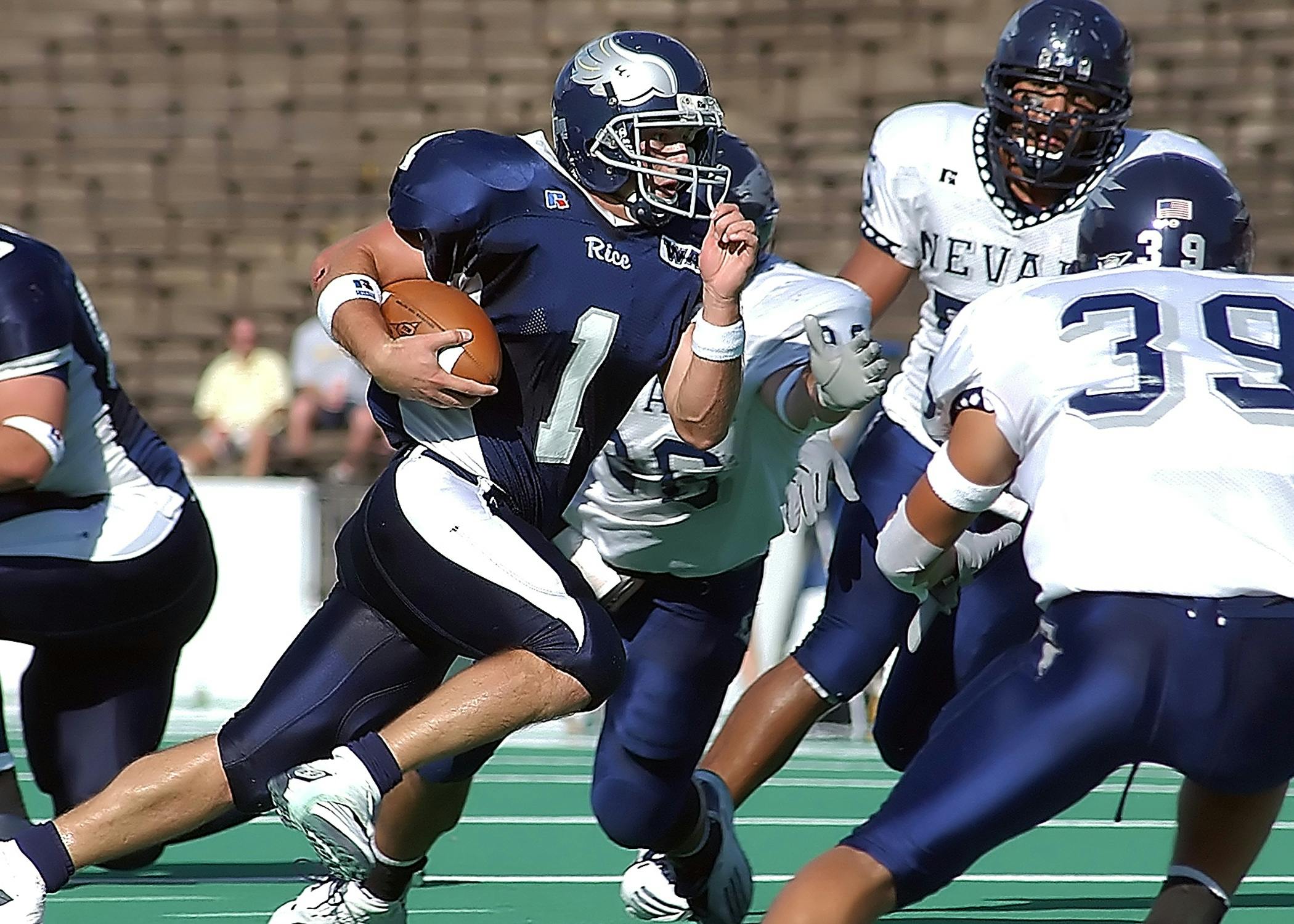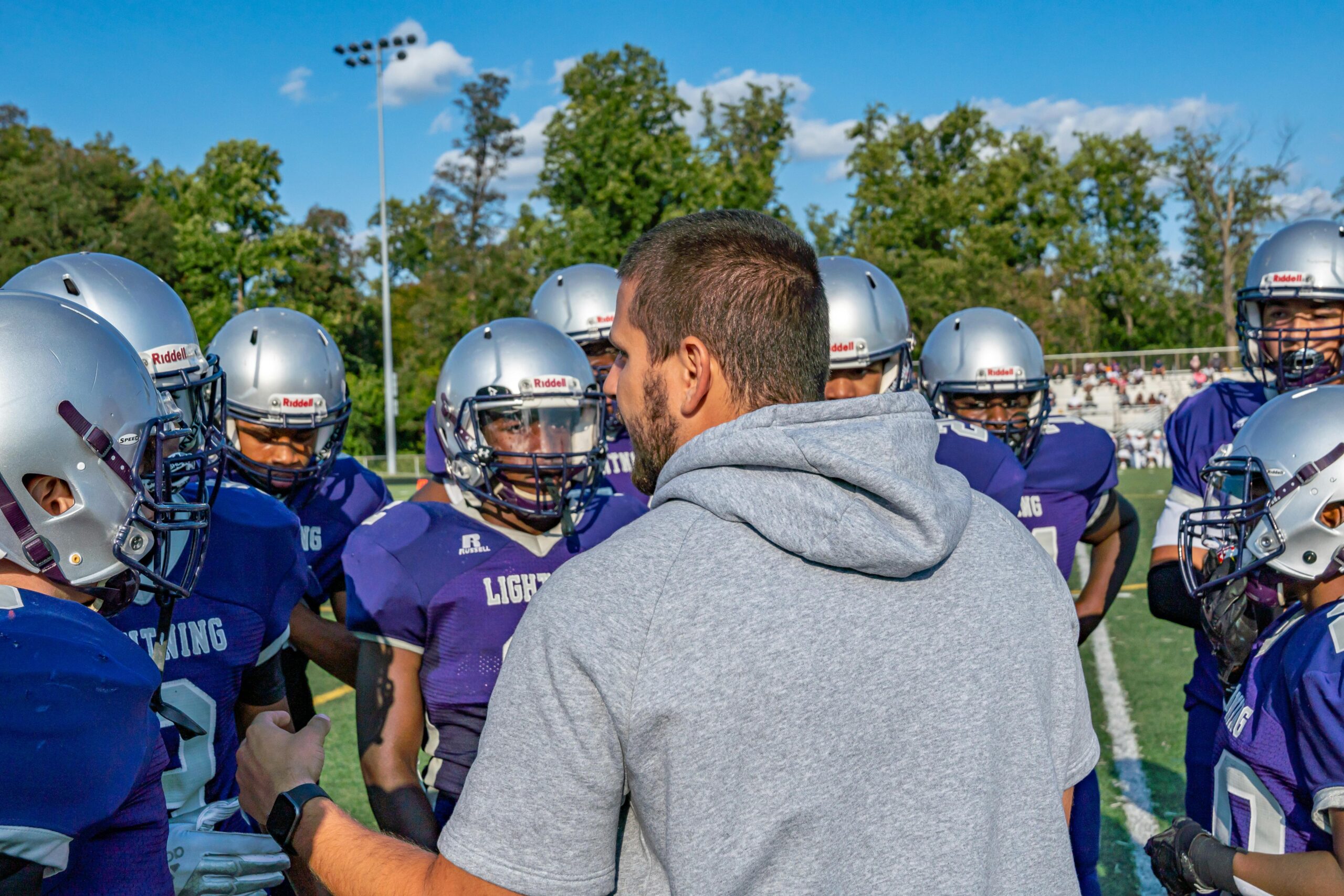“We Have To Be Competitive,” Misunderstood.

“We Have To Be Competitive,” Misunderstood.
Note: If any discussion of sports, college sports, or football prevents you from finding value in analogies, stop here.
In a recent internal meeting with a client, one of the sales reps said, “We have to do this to be competitive.”
The “this” in question was to follow competitor practices in how certain products are sold.
The desire to win is good. And it’s right if you want to stay in business. Competing is good for all involved, assuming some measure of legal and ethical control.
But the meaning of this comment is wrong-headed in so many ways.
Let’s go to college football for a look at competing and how to do it. Because it’s as competitive as it gets.
For players. See recruiting visits and battles. See 8 and 9 figure fundraisers for better facilities.
For coaches. See how the rise in assistant salaries the last 10 years.
For wins. See the above.
And if we’re talking college football, and competition specifically, we have to look at Nick Saban and Alabama.
Six national championships since 2009. 22 total losses since 2007, with 6 coming in that first year. No one has approached their dominance in that timeframe.

They know how to win.
And because of that, athletic directors in college football and GMs in the NFL consistently look to the Crimson Tide’s staff for their next head coach. Hoping to find some of the Saban magic, colleges and pro teams have poached roughly 35 coaches from his tree since the last 90s, when he turned around Michigan State before working his magic at LSU.
While my family and I live in Austin, Texas, I’m from Tennessee originally, and have followed the home state Vols since the last 80s. It’s a deep love, and also the bane of my existence, given their recent on-field struggles.
Which brings me to competition, Nick Saban, and of course, recent coaching hires.
In late 2017, Jeremy Pruitt was hired from Nick Saban’s staff to turn around Tennessee’s football program, which had languished in mediocrity since firing Phil Fulmer in 2008.
Pruitt was known as a great recruiter and a defensive savant, given his time with Saban and stops at Georgia and Florida State. Most head coaches in the Southeastern Conference (SEC) had defensive backgrounds, so he looked like a great fit, especially coming from the Saban coaching tree.
He lasted three years before being shown the door. A 3-7 season, maybe compounded with some recruiting violations, got him canned.

Pruitt recruited really well.
He built a staff of well-regarded coaches.
And he finished with a 16-19 record.
What did he do wrong?
I’m sure there are many issues we could cover, from managerial style, to recruiting violations, to interpersonal skills.
But we’re talking about competition at a more basic, fundamental level.
In a classic competitive mistake, Pruitt tried to out-Alabama Alabama.
He sought to build an offense like theirs, and a defense like the one they’d operated in several years prior.
And it didn’t work.
He didn’t develop competitive advantage.
He had some success on defense, but their offense never came together, despite hiring Jim Chaney from division rival, Georgia, at 1.5 million per year to call offense.
He could’ve learned from years past. Even just looking at Tennessee.
Derek Dooley had tried to replicate Alabama’s defense in 2012 by hiring Sal Sunseri away from Alabama. Despite having one of the best offenses in school history that year, Tennessee’s defense was historically bad. It got Dooley canned that year.
Another note: until 2021, Saban had never lost to a former assistant in 24 tries, with an average margin of victory of 24 points. Most were trying to replicate his systems, from recruiting to player development to offense and defense.
Here’s the thing about football: the parameters are fixed.
- 11 players on each side of the ball
- 7 offensive players must be on the line of scrimmage
- 3 + the quarterback can be in the backfield
- The field’s length and width are set
- The game length is predetermined, as are the number of timeouts per game
- The rules are set and known.
- A touchdown is worth 6 points, a field goal 3, a safety 2, and a point after, 1.
- In college, at least FBS, you have 85 scholarships.
The one area you can get some differential is what you’re willing to spend on the coaching apparatus, from head coaches to assistants to support staff.
- Your conference is fixed (for a while, anyway)
- Your schedule is set
- The path to a bowl game is clear, as is the path to a conference title. (The playoff – depends on who you are and whom you ask)
Here’s the thing about business: Everything is on the table.
- You can choose different customers
- You can choose to meet different needs
- You can meet those needs in a variety of ways, from products to services, from one-off solutions to subscriptions
- You can spend however much you want (depending on your means) to get talent, promote your services, and/or develop new products
- You can market however you want
- You can comp people how you want
- You can price how you want
- You can choose to be big or small
- You can choose to focus on top line or bottom line
- You can offer credit, or seek to take pre-payment
The varieties of options open to you are endless.
Even when you think they’re not.
One of the best businessmen I know once said to me, “When you want to win 10 games, you don’t play in the SEC.” He meant, “It’s too tough some ways. You find a different formula to win. Choose different customers, different cost structures, and different competition.”
Back to football.
Way back in the 2000s, Stanford hired former NFL QB Jim Harbaugh to turn their program around.
Stanford played in the then-Pac 10, full of high flying offenses.
Harbaugh wanted to win. He looked at how the league’s opponents played offense, how they had to defend those offenses, and considered both.
He also took stock of the types of players he could get. He had a smaller pool of options than did the other schools (despite what the proud Pac 12 may tell you about their academic standards, not everyone is a Stanford admit). So he needed to go after different kids, kids other schools might not want as much.
He built a power running offense. Two tight ends, a fullback, the whole deal.
And he ran the ball down other teams’ throats.
They weren’t built to handle that sort of offense.
And he got the kids to run it.
And built a defense of players who could handle USC and Oregon’s offenses.
He competed. By doing it differently.
Back to the sales rep saying, “We have to do it to be competitive.”
In sales, specifically, every attempt must be made to differentiate from the competition. We’re competing for a customer’s attention and their money.
We have many levers to pull:
- The product itself can be tailored or engineered to solve a specific product better than other solutions
- The targeting of customers can be narrowed
- You could go downmarket. Or upmarket.
- The product or service can be adjusted
- The price can be changed, or the payment structure (see the rise of SaaS)
- Or we can change how we sell
On that last item, there are table stakes, like social proof and competence.
But the experience of buying from one vendor should be different from buying from another, especially when the products or services are very similar, and at similar price points.
The buying experience is the only differentiator in the customer’s mind.
(Note: Saying, “We’re different….” immediately confirms you’re not.)
For many companies, especially those selling in 4+ week sales cycles, the very experience of buying from them must be differentiated.
How can this be done?
A different sales process can be put into place, and it can involve meeting with existing customers if the prospect has cleared some qualification hurdles.
The process can entail a more thorough diagnosis of issues, vs. the standard checklist questions most companies’ reps ask.
The response time to leads can be shortened.
The intake of leads can be changed to be more of a red carpet experience. (Basically look at how anything is done in medicine with regard to customers, and do the opposite.)
You can ask for more skin in the game from prospects.
You could offer guarantees to certain prospects if they meet certain conditions.
The thing is that the options are endless. Our imaginations are usually what fail us.
Trying to be more like the competition is a recipe of mediocrity. THAT’s what THEY do. We all need our own formula.
Where will you find yours?
A different customer?
A different way to meet the need? And thus a different cost structure?
A different set of competitors in meeting that customer need?
Or something else altogether?
If you’re thinking about this, there are two books I’d suggest reading.
First, especially if you’re in professional services, check out David C. Baker’s The Business of Expertise. He gets deeply into positioning to win by being the only one doing what you’re doing.
Second, if you’re in any sort of business, read Richard Rumelt’s Good Strategy/Bad Strategy. Maybe the best business book I’ve read in 10 years. He’s a crystal-clear thinker and makes a much better case on competing than I can.
Want to talk more? Email me at adam@thenorthwoodgrp.com

